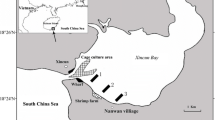Summary
The N2-fixing biota of Macquarie Island are dominated by cyanobacteria growing epiphytically or symbolically with plants or lichens. Highest rates of C2H2-reducing activity were found in the leafy lichen Peltigera sp. colonizing herbfields and short grasslands and in the coastal angiosperm Colobanthus muscoides. Significant rates of C2H2 reduction were also found to be associated with the liverwort Jamesoniella colorata, commonly occurring in coastal and plateau mires, in a mossbed of Dicranella cardotii colonizing a land-slip face on the grassland slopes at 100 m altitude and within polsters of the mosses Ditrichum strictum and Andreaea sp. found in exposed localities on the plateau at 200–300 m altitude. It was concluded that the common feature of plants supporting active N2 fixation in dry habitats was the dense packing of stems and leaves, enabling water translocation to the cyanobacterial zone by wick action. Epiphytic cyanobacterial C2H2 reduction in wet habitats was widespread and not restricted to any particular plant species. Notable N2-fixing lichens of the plateau were Pseudocyphellaria delisea and Stereocaulon sp., although both were also occasionally found in coastal herbfields. No significant N2-fixing activity was associated with any of the dominant grasses tested. Heterotrophic N2 fixation was also found to be insignificant in the various habitats tested, however N2-fixing Bacillus (B. macerans or B. polymyxa) were universally present in coastal, grassland slope, or plateau samples, including moss polster samples. A N2fixing Clostridium sp. was isolated in only one instance, from soil in the vicinity of a seal wallow on the coast.
Similar content being viewed by others
References
Broady PA (1979) The terrestrial algae of Signy Island, South Orkney Islands. Br Antarct Surv Sci Rep 98:1–117
Croome RL (1973) Nitrogen fixation in the algal mats on Marion Island. S Afr J Antarct Res 3:64–67
Davey A (1986) Nitrogen fixation by cyanobacteria in the Vestfold Hill. In: Pickard J (ed) Antarctic Oasis. Terrestrial environments and history of the Vestfold Hills. Academic Press, London
Fogg GE, Stewart WDP (1968) In situ determinations of biological nitrogen fixation in Antarctica. Br Antarct Surv Bull 15:39–46
Horne AJ (1972) The ecology of nitrogen fixation on Signy Island, South Orkney Islands. Br Antarc Surv Bull 27:1–18
Jenkin JF (1975) Macquarie Island, subantarctic. In: Rosswall T, Heal OW (eds) Structure and function of tundra ecosystems. Ecol Bull (Stockholm) 20:pp375–397
Line MA (1990) Identification of nitrogen-fixing enterobacteria from living Sassafras (Atherosperma moschatum Labill) trees. Plant Soil 125:149–152.
Line MA, Loutit MW (1971) Non-symbiotic nitrogen-fixing organisms from some New Zealand tussock-grassland soils. J Gen Microbiol 66:309–318
Ratkowsky DA, Olley J, McMeekin TA, Ball A (1982) Relationship between temperature and growth rate of bacterial cultures. J Bacteriol 149:1–5
Selkirk PM, Seppelt RD, Selkirk DR (1990) Subantarctic Macquarie Island environment and biology. Cambridge University Press, Melbourne
Smith VR (1984) Effects of abiotic factors on acetylene reduction by cyanobacteria epiphytic on moss at a subantarctic island. Appl Environ Microbiol 48:594–600
Smith VR (1985) Heterotrophic acetylene reduction in soils at Marion Island. In: Siegfried WR, Condy PR, Laws RM (eds) Antarctic nutrient cycles and food webs. Springer, Berlin
Smith VR, Ashton PJ (1981) Bryophyte-cyanobacteria associations on subantarctic Marion Island: are they important in nitrogen fixation? S Afr J Antarct Res 10/11:24–26
Smith VR, Russell S (1982) Acetylene reduction by bryophyte cyanobacteria associations on a subantarctic island. Polar Biol 1:153–157
Sneath PHA (1986) Endospore-forming Gram-positive rods and cocci. In: Sneath PHA, Mair NS, Sharpe ME, Holt JG (eds) Bergey's manual of systematic bacteriology, vol 2. Williams and Wilkins, Baltimore
Taylor BW (1955) The flora, vegetation and soils of Macquarie Island. ANARE Rep Ser B, vol 2. Antarctic Division, Melbourne
Author information
Authors and Affiliations
Rights and permissions
About this article
Cite this article
Line, M.A. Nitrogen fixation in the sub-Antarctic Macquarie Island. Polar Biol 11, 601–606 (1992). https://doi.org/10.1007/BF00237954
Received:
Accepted:
Issue Date:
DOI: https://doi.org/10.1007/BF00237954




